Abstract
To select a tentative standard method for detection of viruses in sludge the American Society for Testing and Materials D19:24:04:04 Subcommittee Task Group initiated round robin comparative testing of two procedures that, after initial screening of several methodologies, were found to meet the basic criteria considered essential by the task group. Eight task group member laboratories agreed to perform round robin testing of the two candidate methods, namely, The Environmental Protection Agency or low pH-AlCl3 method and the Glass or sonication-extraction method. Five different types of sludge were tested. For each particular type of sludge, a single laboratory was designated to collect the sludge in a single sampling, make samples, and ship it to the participating laboratories. In most cases, participating laboratories completed all the tests within 48 h of sample arrival. To establish the reproducibility of the methods, each laboratory tested each sludge sample in triplicate for the two candidate virus methods. Each processed sludge sample was quantitatively assayed for viruses by the procedures of each individual round robin laboratory. To attain a more uniform standard of comparison, a sample of each processed sample from all laboratories was reassayed with one cell line and passage number by a single laboratory (Environmental Protection Agency Environmental Monitoring and Support Laboratory, Cincinnati, Ohio). When the data were statistically analyzed, the Environmental Protection Agency method was found to yield slightly higher virus recoveries for all sludge types, except the dewatered sludge. The precisions of both methods were not significantly different.(ABSTRACT TRUNCATED AT 250 WORDS)
Full text
PDF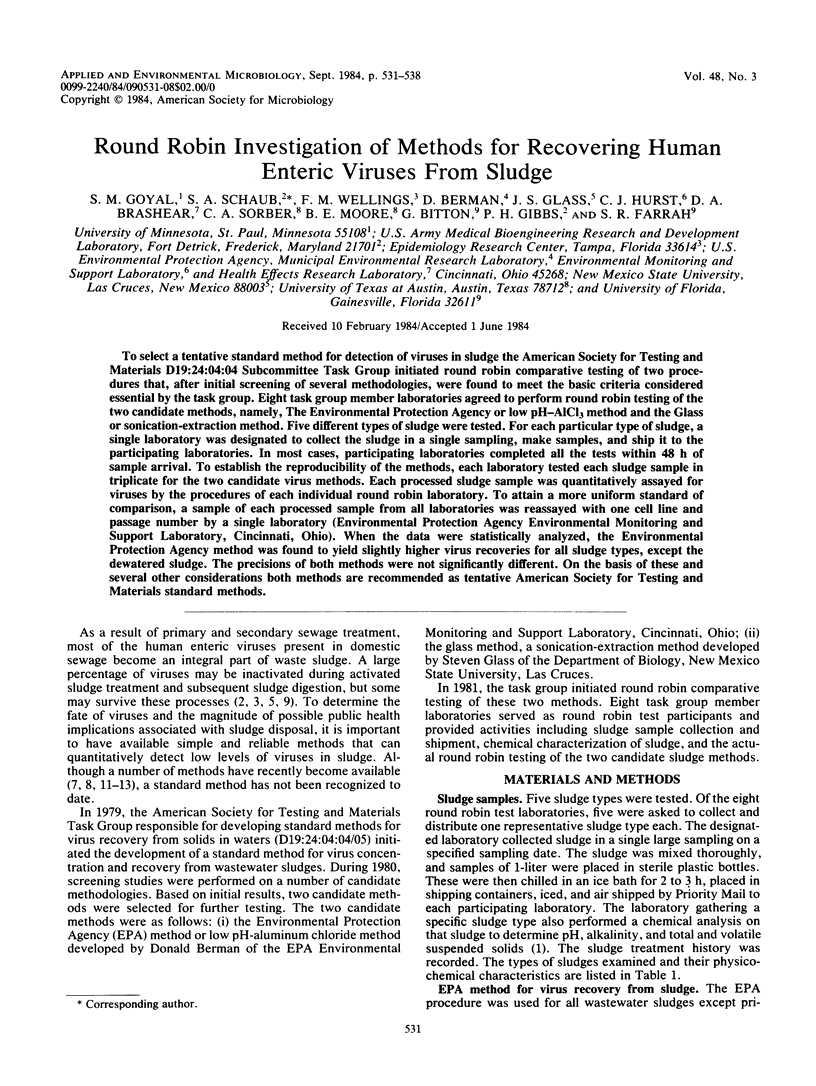
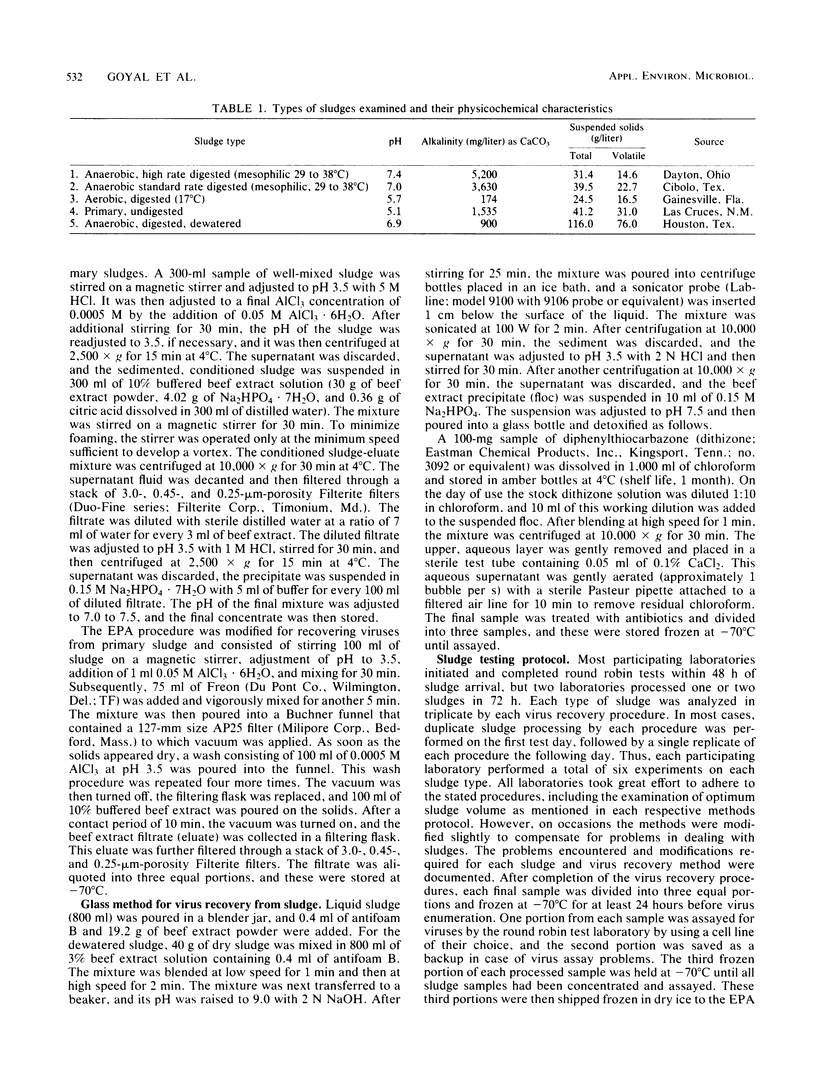

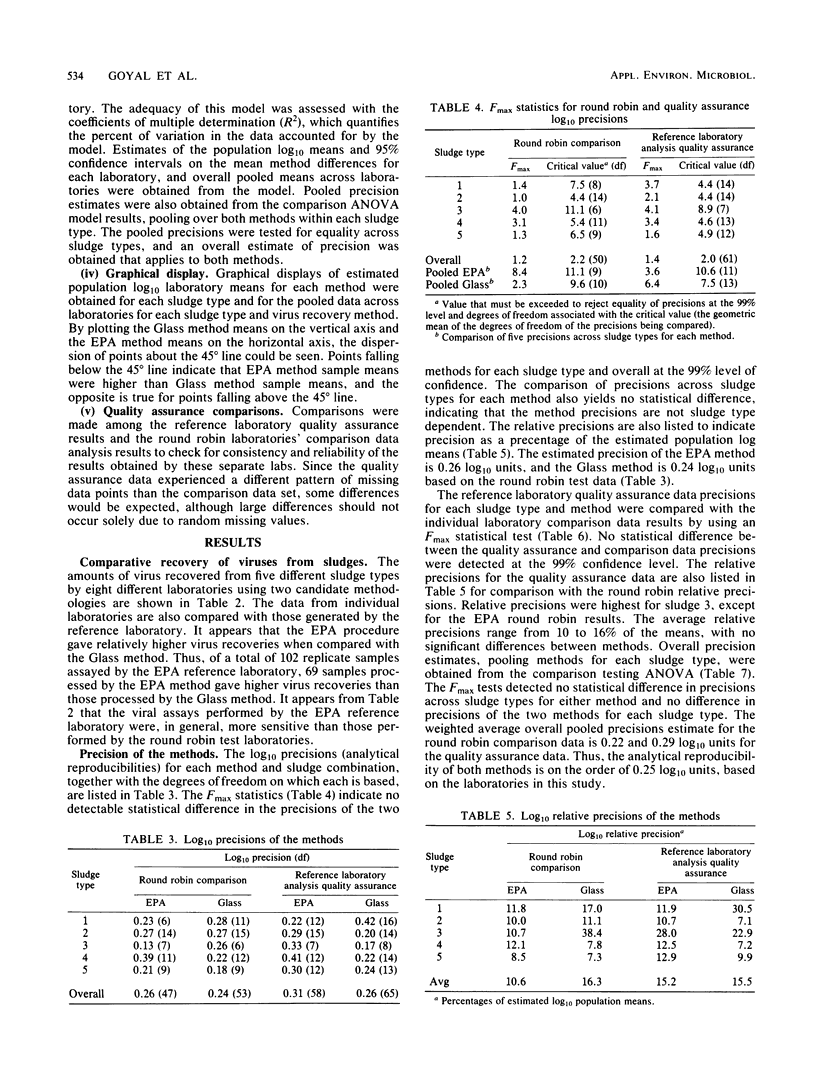

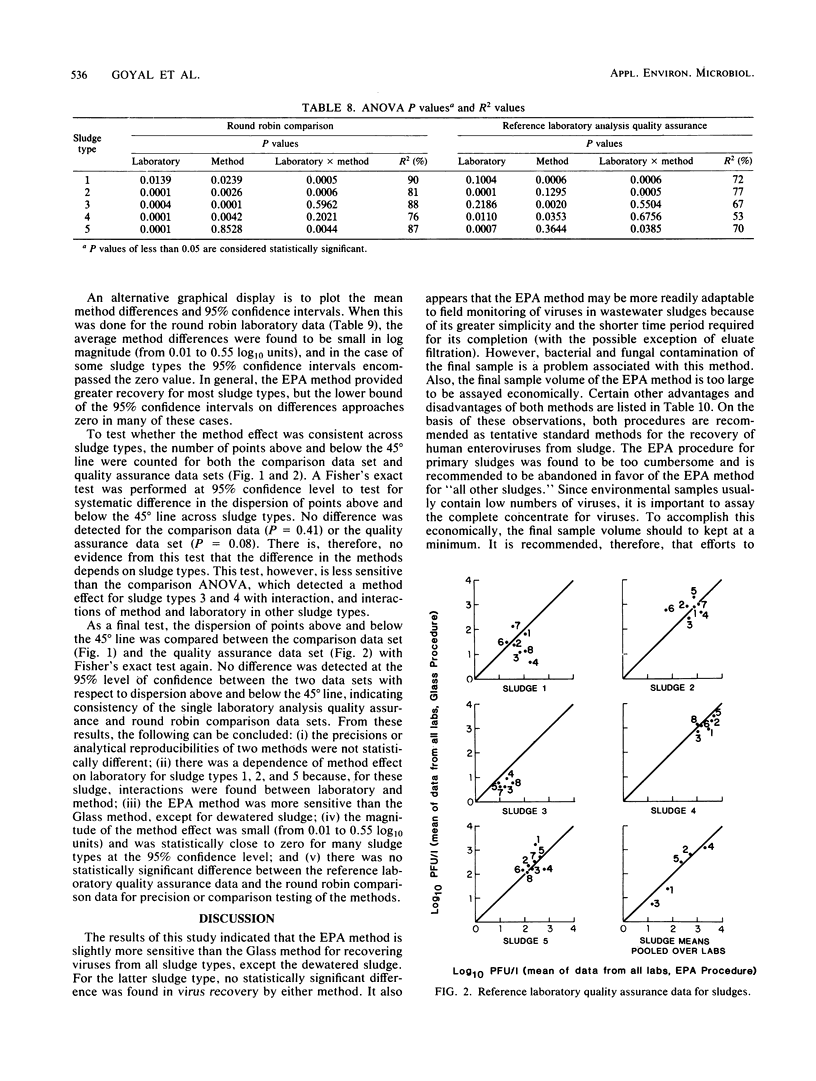
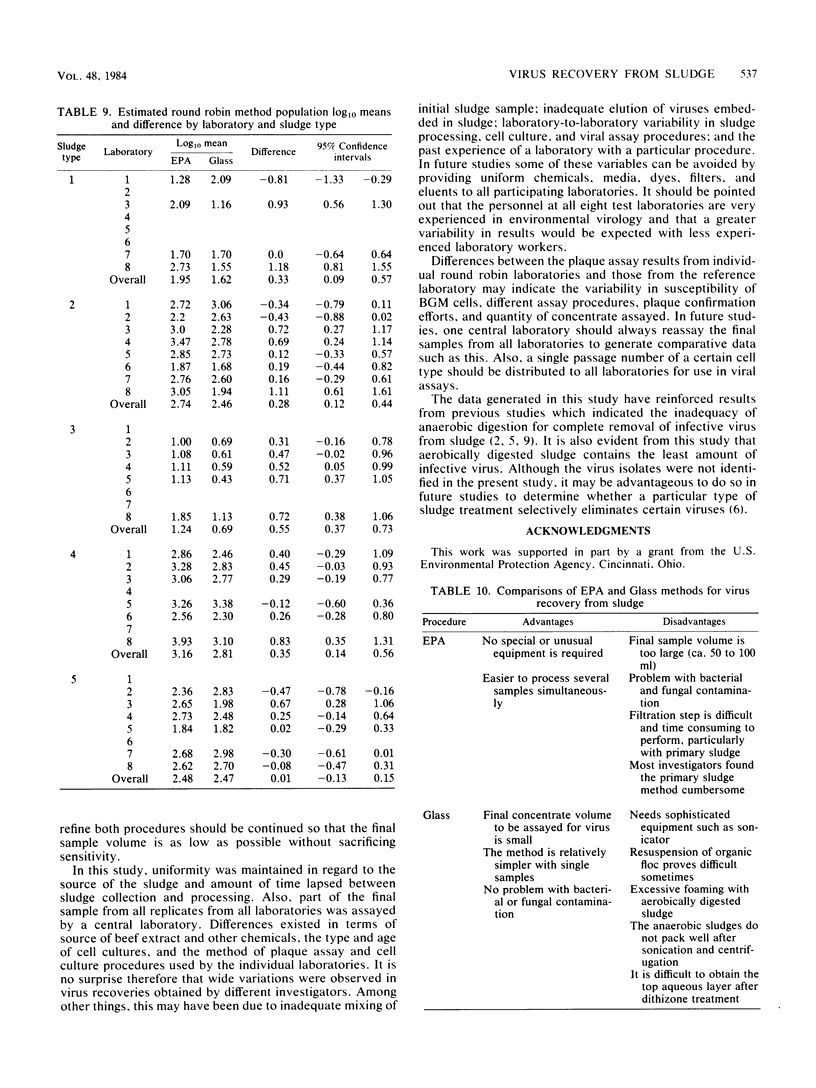
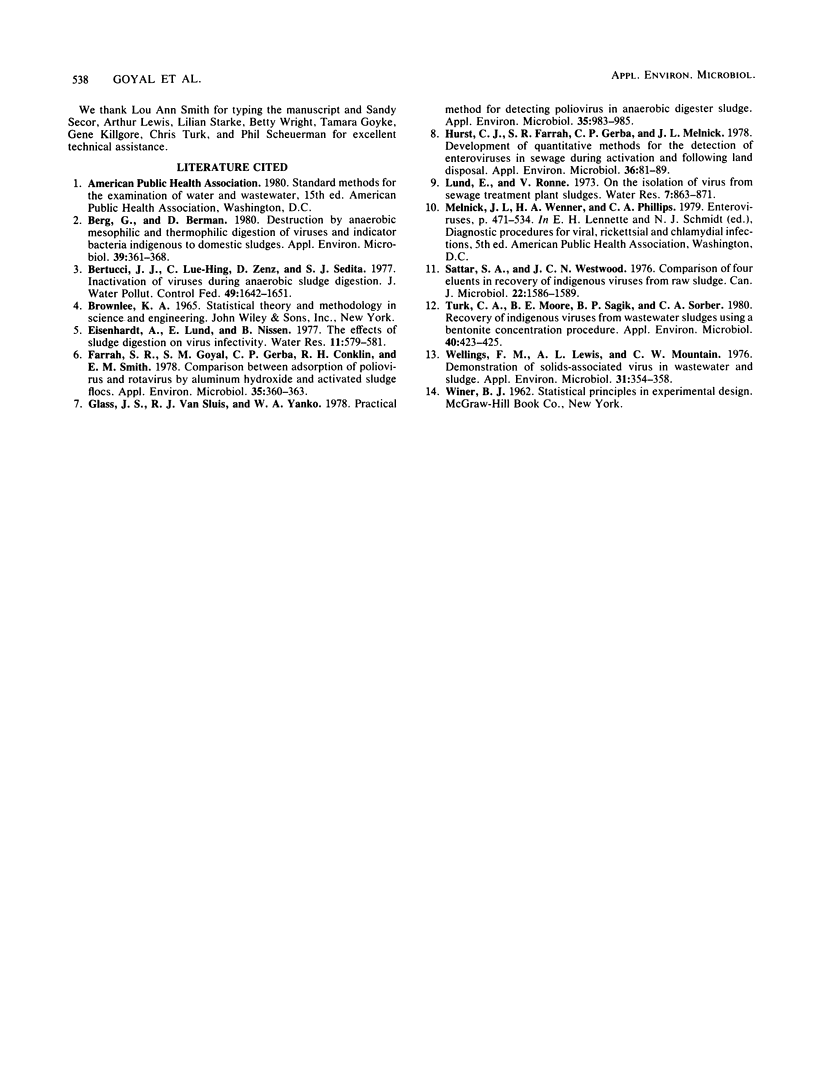
Selected References
These references are in PubMed. This may not be the complete list of references from this article.
- Berg G., Berman D. Destruction by anaerobic mesophilic and thermophilic digestion of viruses and indicator bacteria indigenous to domestic sludges. Appl Environ Microbiol. 1980 Feb;39(2):361–368. doi: 10.1128/aem.39.2.361-368.1980. [DOI] [PMC free article] [PubMed] [Google Scholar]
- Farrah S. R., Goyal S. M., Gerba C. P., Conklin R. H., Smith E. M. Comparison between adsorption of poliovirus and rotavirus by aluminum hydroxide and activated sludge flocs. Appl Environ Microbiol. 1978 Feb;35(2):360–363. doi: 10.1128/aem.35.2.360-363.1978. [DOI] [PMC free article] [PubMed] [Google Scholar]
- Glass J. S., Van Sluis R. J., Yanko W. A. Practical method for detecting poliovirus in anaerobic digester sludge. Appl Environ Microbiol. 1978 May;35(5):983–985. doi: 10.1128/aem.35.5.983-985.1978. [DOI] [PMC free article] [PubMed] [Google Scholar]
- Hurst C. J., Farrah S. R., Gerba C. P., Melnick J. L. Development of quantitative methods for the detection of enteroviruses in sewage sludges during activation and following land disposal. Appl Environ Microbiol. 1978 Jul;36(1):81–89. doi: 10.1128/aem.36.1.81-89.1978. [DOI] [PMC free article] [PubMed] [Google Scholar]
- Sattar S. A., Westwood J. C. Comparison of four eluents in the recovery of indigenous viruses from raw sludge. Can J Microbiol. 1976 Oct;22(10):1586–1589. doi: 10.1139/m76-233. [DOI] [PubMed] [Google Scholar]
- Turk C. A., Moore B. E., Sagik B. P., Sorber C. A. Recovery of indigenous viruses from wastewater sludges, using a bentonite concentration procedure. Appl Environ Microbiol. 1980 Aug;40(2):423–425. doi: 10.1128/aem.40.2.423-425.1980. [DOI] [PMC free article] [PubMed] [Google Scholar]
- Wellings F. M., Lewis A. L., Mountain C. W. Demonstration of solids-associated virus in wastewater and sludge. Appl Environ Microbiol. 1976 Mar;31(3):354–358. doi: 10.1128/aem.31.3.354-358.1976. [DOI] [PMC free article] [PubMed] [Google Scholar]


